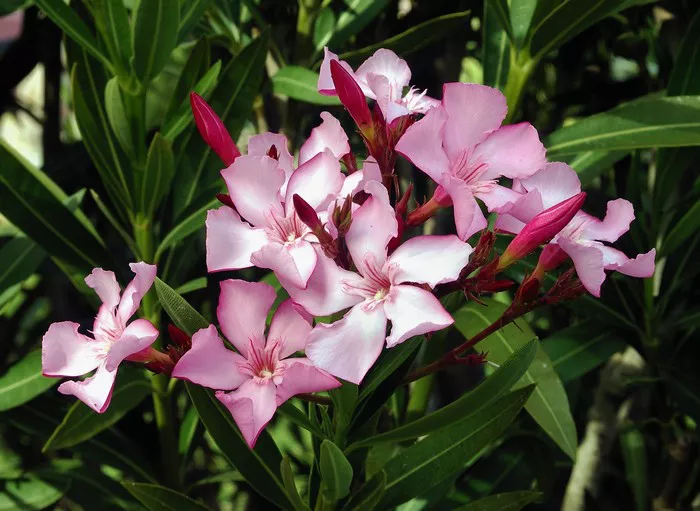In response to a recent tragic incident, two temple boards under the control of the Kerala government, overseeing over 2,500 temples across the state, have imposed a ban on the use of oleander flowers, locally known as arali, in temple offerings. This decision follows the untimely demise of a 24-year-old woman who accidentally ingested oleander leaves.
Here’s what unfolded:
Surya Surendran, a young nurse, lost her life on April 30, allegedly due to accidental oleander poisoning. Surendran, who had secured a job in the UK, was scheduled to depart on April 28. However, on the morning of her departure, she chewed on oleander leaves from a plant growing outside her residence in Pallipad, Alappuzha. Unaware of the danger posed by the plant, she exhibited symptoms of unease and subsequently vomited several times. Later that day, she collapsed at Kochi airport and succumbed to her condition after a few days of hospitalization. During her medical treatment, Surendran disclosed to doctors that she had consumed oleander leaves and flowers. Subsequent forensic analysis confirmed oleander poisoning as the cause of death.
Understanding Oleander:
Nerium oleander, commonly referred to as oleander or rosebay, is a widely cultivated plant found in tropical, subtropical, and temperate regions worldwide. Known for its resilience to drought, this shrub is frequently utilized for ornamental and landscaping purposes.
In Kerala, the plant is known by the names arali and kanaveeram and is often grown along highways and beaches to serve as natural green fencing. Oleander exists in various varieties, each distinguished by a different colored flower.
Traditional Medicinal Uses:
While oleander finds mention in the Ayurvedic Pharmacopoeia of India for its medicinal properties, its toxicity is well-documented. Ayurvedic texts describe the use of oleander extracts in treating skin ailments, with references in classical texts such as Brihattrayi and Nighantus. However, it is crucial to note that oleander is also classified as a poison in certain Ayurvedic scriptures like Bhavaprakasha.
Toxicity and Risks:
Despite its historical use in Ayurvedic medicine, oleander’s toxicity has been recognized globally for centuries. The plant contains cardiac glycosides, including oleandrin, folinerin, and digitoxigenin, which can have profound effects on cardiac muscle function. While these compounds can strengthen and accelerate heart contractions, the therapeutic window is narrow, and overdose or toxicity is common.
Symptoms of oleander poisoning include nausea, diarrhea, vomiting, rashes, confusion, dizziness, irregular heartbeat, and, in severe cases, death. It’s important to note that the ingestion or inhalation of smoke from burning oleander can also lead to intoxication.
Moving forward, the ban on oleander flowers in temple offerings reflects a proactive measure by temple authorities to mitigate potential risks and ensure the safety of worshippers.


